Everyone wants to make the best of their cheesecloth. One of the sure bets of getting value for your money is using and re-using the cheesecloth. This will only be possible if you can safely clean the cheesecloth after every use. Cheesecloth, especially food-safe cheesecloth, is not just any other fabric. It needs specialized cleaning.
Never cleaned cheesecloth before? Well, we’ve got your back. We’ll share some tips on how to clean cheesecloth safely and save you that extra coin. The secret behind re-using cheesecloth is always keeping it clean. This simply means thoroughly cleaning it after every use and ensuring that it is dry before storing. Cheesecloth is made of loose weave fabric that makes it easy to clean and dry. Let’s help you understand how you can clean and recycle reusable cheesecloth.
Step by Step Guide on How To Clean Cheesecloth
Step1: Soak cheesecloth Immediately/Pre-Rinse
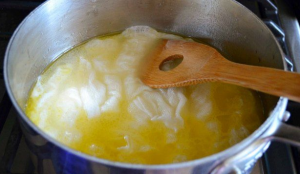 Soaking is an essential step in the cheesecloth cleaning process. Most of the foods solidify very fast once removed in the cooking liquid. This means that they will stick to the cheese cloth. Soaking ensures that the food particles do not stick to the fabric.
Soaking is an essential step in the cheesecloth cleaning process. Most of the foods solidify very fast once removed in the cooking liquid. This means that they will stick to the cheese cloth. Soaking ensures that the food particles do not stick to the fabric.
Try to remove all the visible food particles during the soaking stage. Soak, rinse until when the cheese cloth doesn’t have any food remnants. This will give you an easy time when cleaning your cloth.
Step 2: Clean Thoroughly
Clean the cheese cloth in a tub of water. Preferably, use hot water. This will not only clean the fabric but also kill the micro-organisms that may be in the fabric.

Rub the cheesecloth fabric thoroughly against itself. This should be done gently to ensure that you do not tear the fabric.
Inspect the cloth for stains and food remains. The cloth will be considered clean when all the food particles have been removed.
Meat, grease and oil tend to be very stubborn. These are best removed by boiling the cheese cloth in water. Ten (10) minutes should be enough to remove all the grease and oil.
Rinse the cheesecloth thoroughly.
Step 3: Let dry
 Hanging the cheesecloth outside is the best way to let it dry. You however need to ensure that it’s not exposed to any contamination.
Hanging the cheesecloth outside is the best way to let it dry. You however need to ensure that it’s not exposed to any contamination.
A hot dryer may be used to dry the cloth. This will be faster and ensures that the cloth doesn’t collect dirt and other contaminants.
Safe Cleaning Agents Used To Clean Cheesecloth
Cheesecloth cleaning is an activity that requires utmost care. The procedure and reagents used to clean the cheesecloth will definitely determine the quality of cheese produced. It is therefore important to ensure that you are using the right cleaning agents. Some of the approved cheesecloth cleaning agents include;
1. Food Certified Soaps
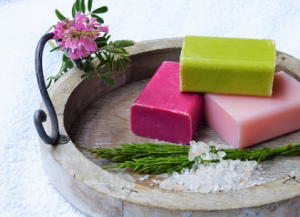 The national sanitation foundation (NSF) is mandated with development and certification of public health related programs. They set the standards through testing and certification on products and systems.
The national sanitation foundation (NSF) is mandated with development and certification of public health related programs. They set the standards through testing and certification on products and systems.
Soaps that have been certified by the NSF international will have the certification trade mark. These are user friendly. They can be used to clean cheese cloth as they do not contain any toxic chemicals.
2. White Vinegar
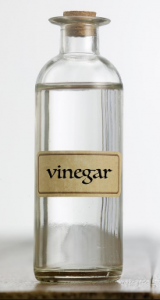 White vinegar has been used for decades as a cleaning agent. This may be used to remove stubborn stains in cheese cloth. Crusty bits that prove difficult to remove with plain water can be removed with ease using white vinegar.
White vinegar has been used for decades as a cleaning agent. This may be used to remove stubborn stains in cheese cloth. Crusty bits that prove difficult to remove with plain water can be removed with ease using white vinegar.
When using white vinegar to clean cheesecloth, mix half (1/2) cup of the vinegar with one gallon of water. If the cheesecloth is very grimy, you may use up to one (1) cup of vinegar.
Vinegar alternatives include; lemon juice and baking soda.
3. NSF Certified Bleach
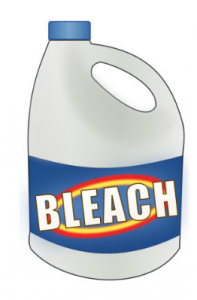
Not every type of bleach can be used to clean cheesecloth. It is recommended that you only use NSF certified bleach. This bleach normally has a label that indicates calcium hypochlorite. This is the solid, normally powdered, form of chlorine.
Borax may be used to clean stubborn stains in cheesecloth.
Tips For Using Bleach Or Chlorine To Clean Cheesecloth
- The bleach needs to be diluted. Only a small amount if chlorine/bleach is needed to sanitize the fabric. The recommended ration is (one) 1 teaspoon of chlorine to (one) 1 quart of water.
- Do not soak the cheesecloth for long. Chlorine based bleach becomes inactive very fast. You therefore just need to soak it for a few minutes. Rinse the cloth immediately.
- You can extend the life of your chlorine solution by storing it in a cool dark place.
- Chlorine with added fragrance is not food-safe and should not be used to clean cheesecloth.
4. Hydrogen Peroxide
Hydrogen peroxide is used to clean and sanitize cheesecloth as well as other food handling appliances. It is normally heated and will produce an odor, this odor isn’t harmful. Here’s how to use hydrogen peroxide to clean cheese cloth by heating and without heating.
Option 1: Heating Hydrogen Peroxide
- Use a sauce pan to heat ½ C (4oz) hydrogen peroxide to a temperature of 660C (1500F).
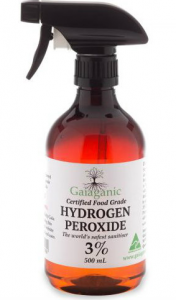
- Pour the warm hydrogen peroxide solution into a spray bottle using a funnel.
- Hang the cheesecloth and spray the solution.
- Let sit for at least one (1) minute.
- Rinse the cloth thoroughly.
Option 2: Without Heating Hydrogen Peroxide
- Measure ½ C (4oz) hydrogen peroxide.
- Pour into a spray bottle using a funnel
- Spray the hydrogen peroxide onto the hang cheesecloth
- Let sit for at least 10 minutes
- Rinse the cheese cloth with adequate water.
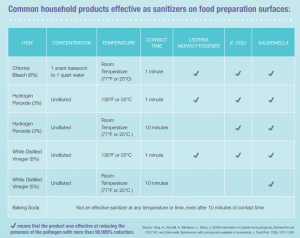
Conclusion
There are numerous guides on how to clean cheesecloth. However, it’s not every process that will be fabric friendly. We have narrowed down the options for you to help you select the method that will be food-safe and friendly.
Use any of the above cleaning agents to clean your cheese cloth in an easy and safe way. You can also learn how to effectively use your cheesecloth here. Enjoy every moment in your kitchen.
